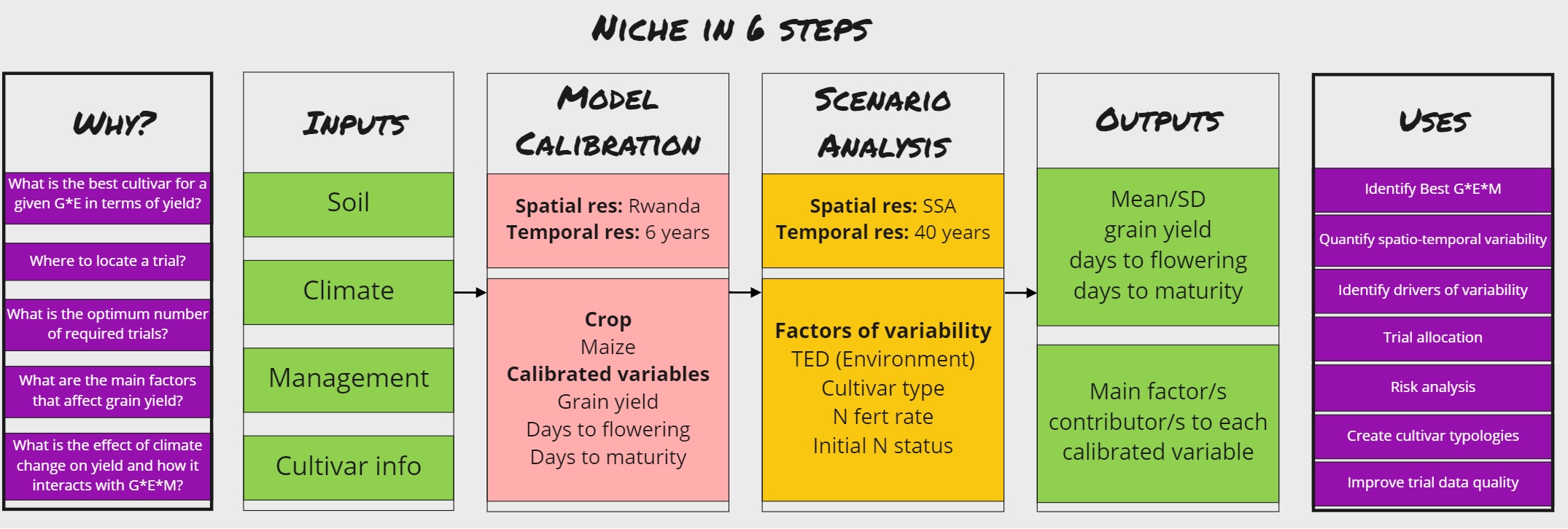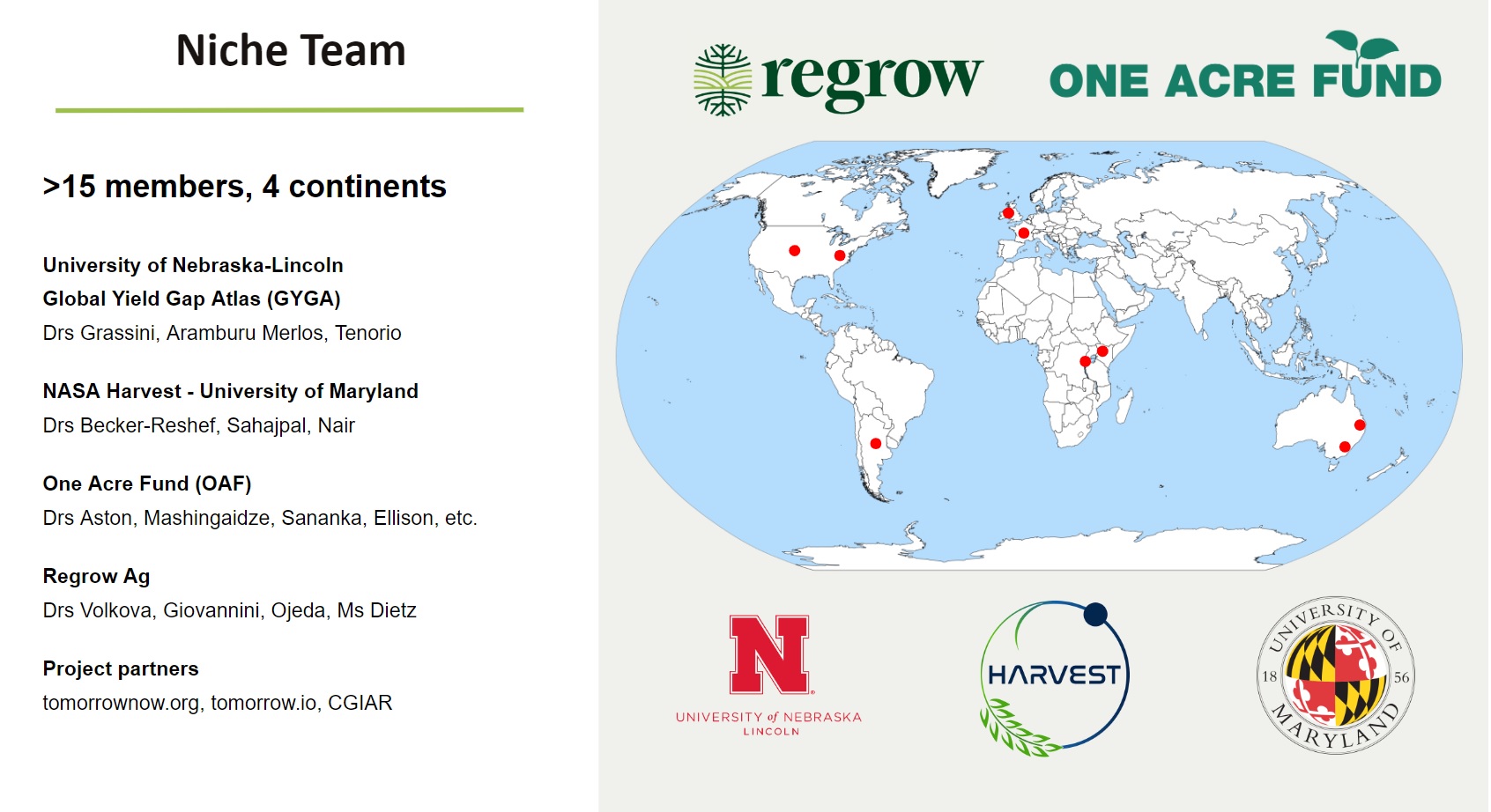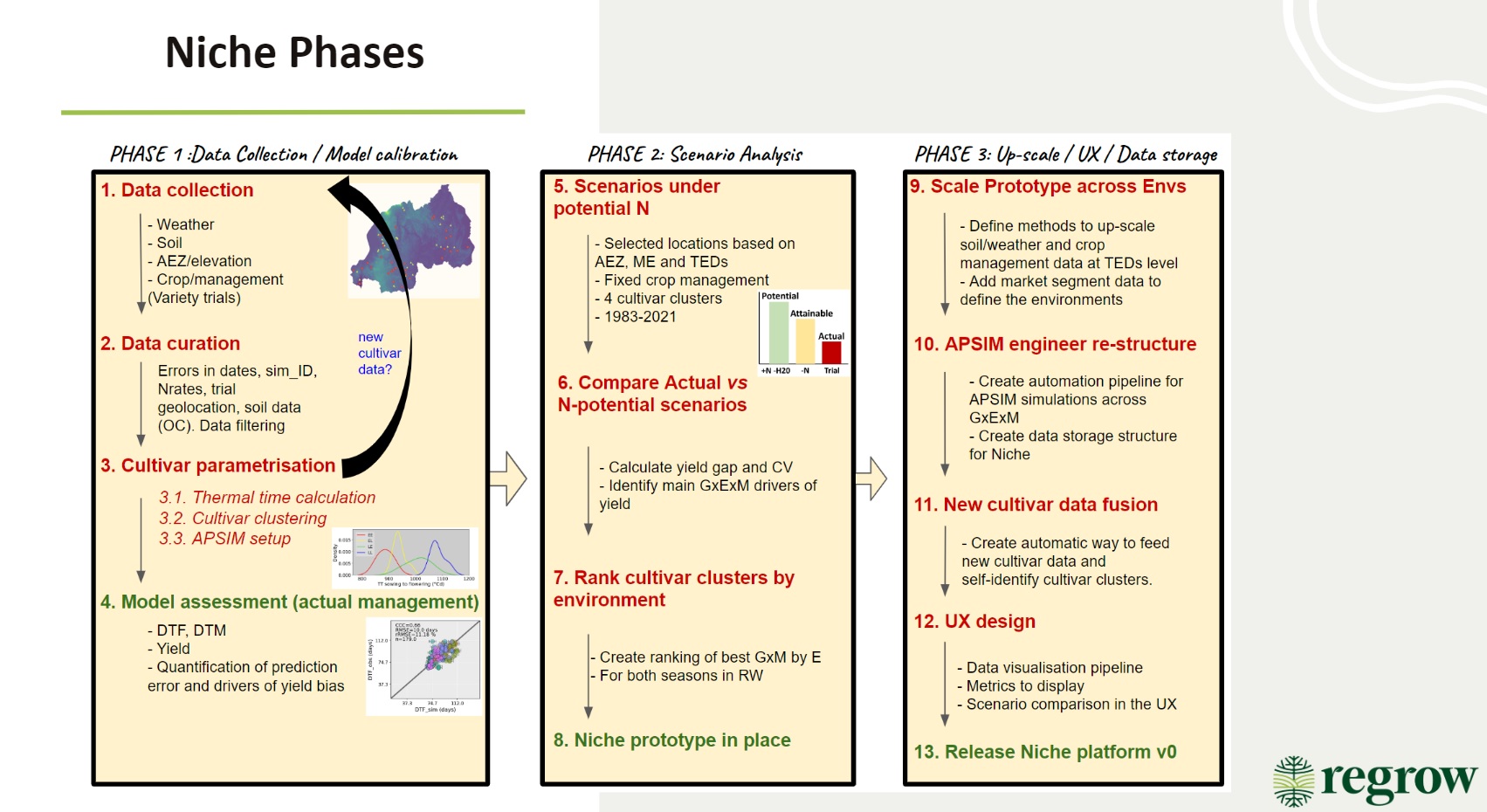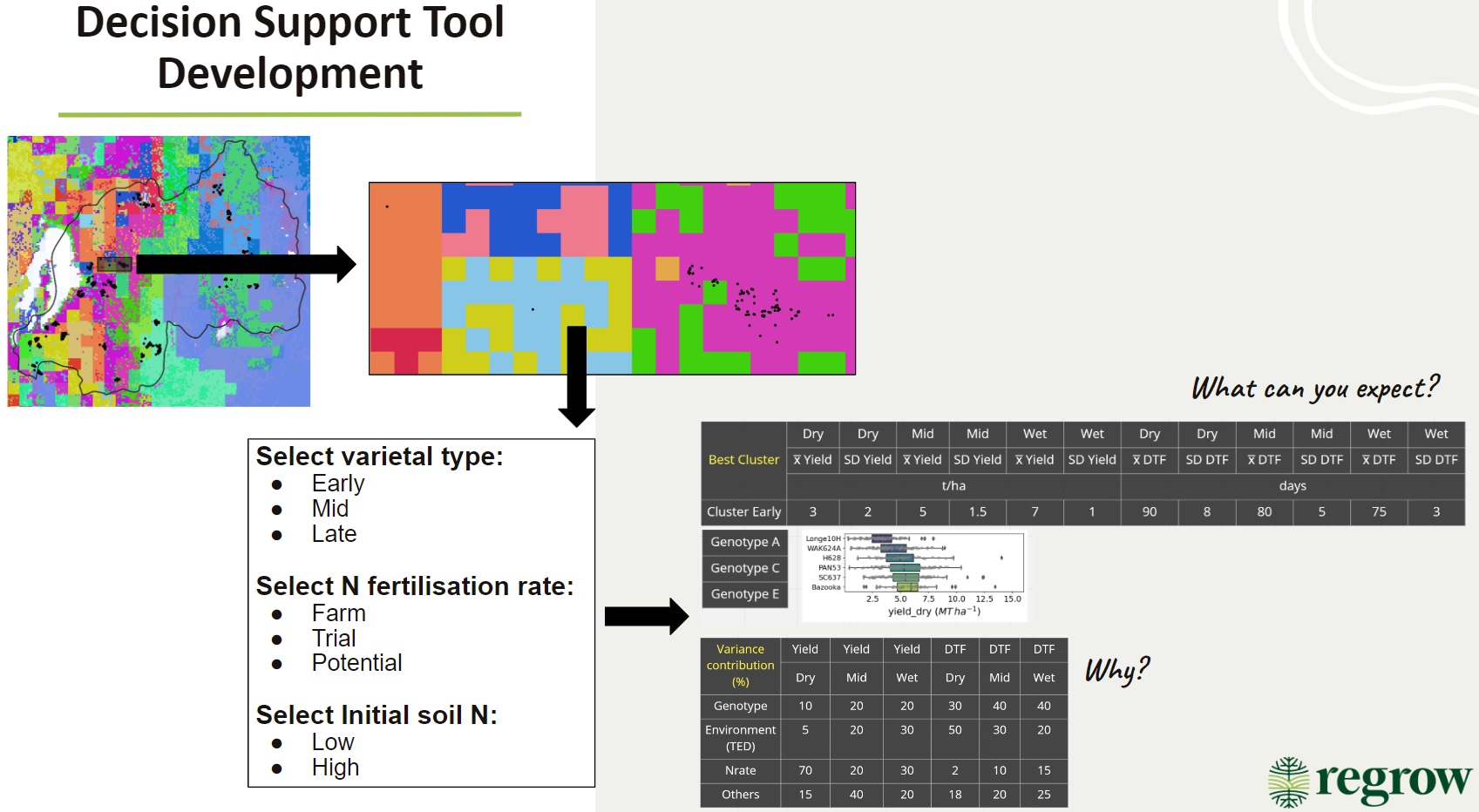Niche - Optimising Crop Variety Placement in Sub-Saharan Africa
“Niche” is a project that aims to optimize crop variety placement in Sub-Saharan Africa, led by Regrow Ag with NASA Harvest, One Acre Fund, and the University of Nebraska - Lincoln as key implementation partners. The project, which has been awarded a $5M, 4-year grant from the Bill & Melinda Gates Foundation, will bring together several key agriculture and climate tech partners to build an assessment framework and digital tools that will:
- Define and characterize the current and future performance of crop and variety adaptation zones in Sub-Saharan Africa, to advance the knowledge of seed breeders on climate adaptation in those specific zones
- Identifiy optimal variety placement for novel and existing crop varieties, so they can be effectively distributed to farmers
One of the main objectives of this project is to create a scenario analysis tool able to identify the best genotype for a given environment and crop management (based on end-user needs specified in previous section). To do that, we are working on the development of a 1- rigorous model calibration for phenology and grain yield and 2- scenario analysis tool which will be available through API and map visualisation.
End users will be able to select specific crop management (N rate, sowing date, etc.) for a particular latitude/longitude combination and the Niche scenario tool will identify the best genotype cluster (high yield and low inter-annual variability) for that given environment * crop management combination. The system also will generate information about which hybrids were part of the best genotypic cluster and the main factors driving the yield for the selected scenario.
Schematic representation of the Niche Tool including why it was created and processes involved in its development, model calibration, scenario analysis tool, outputs and main uses.



